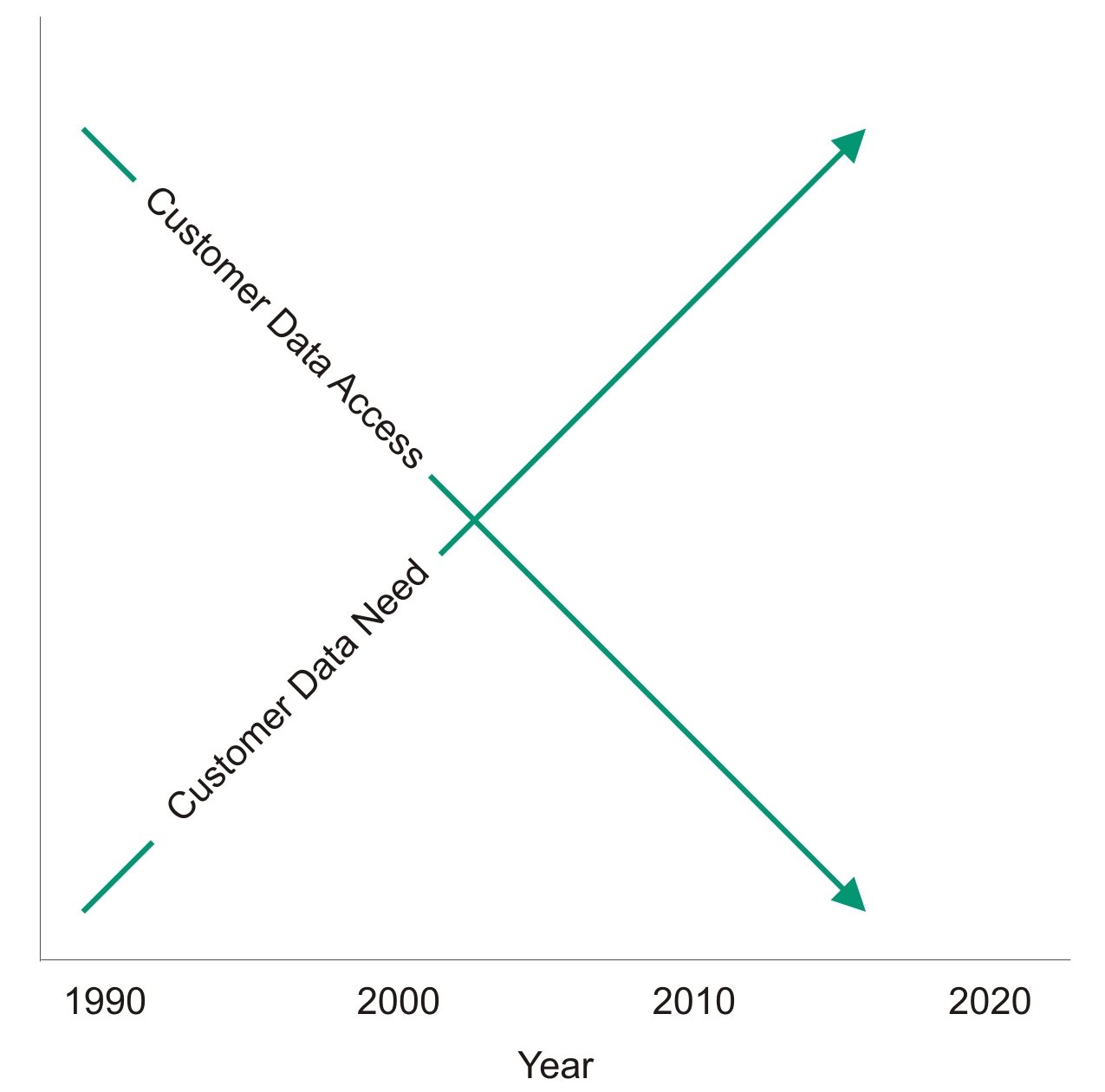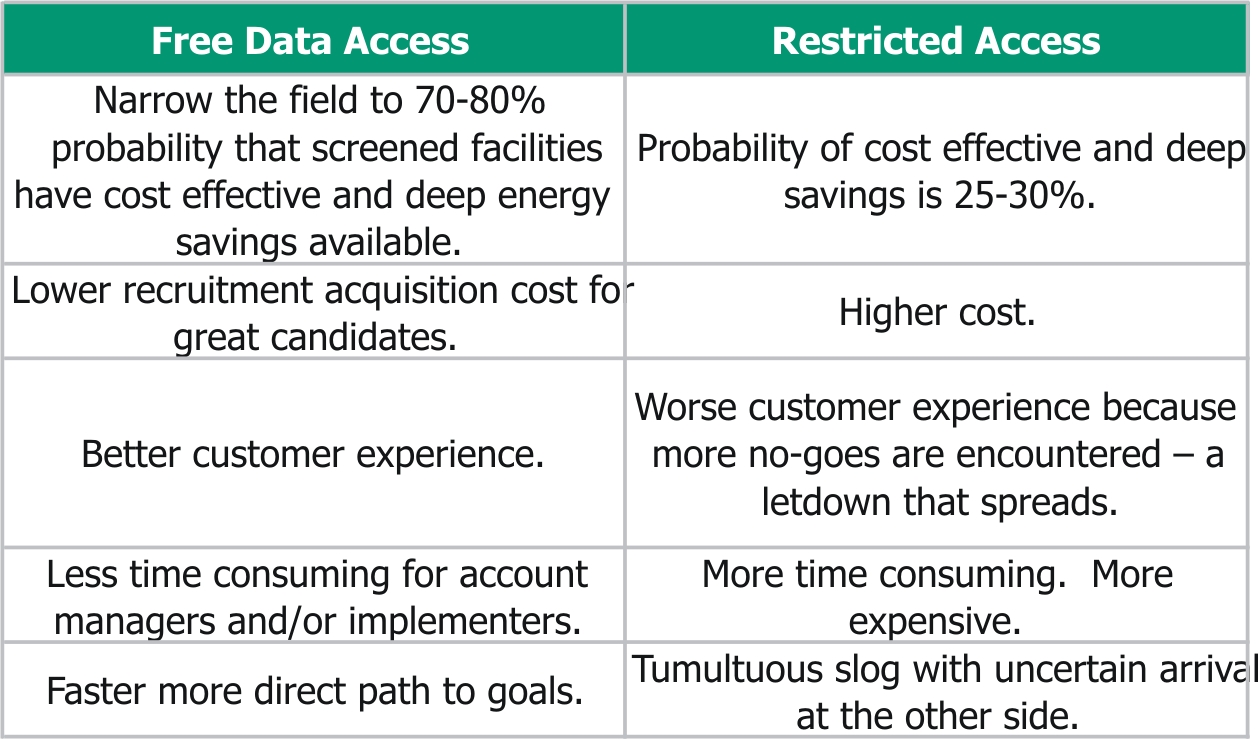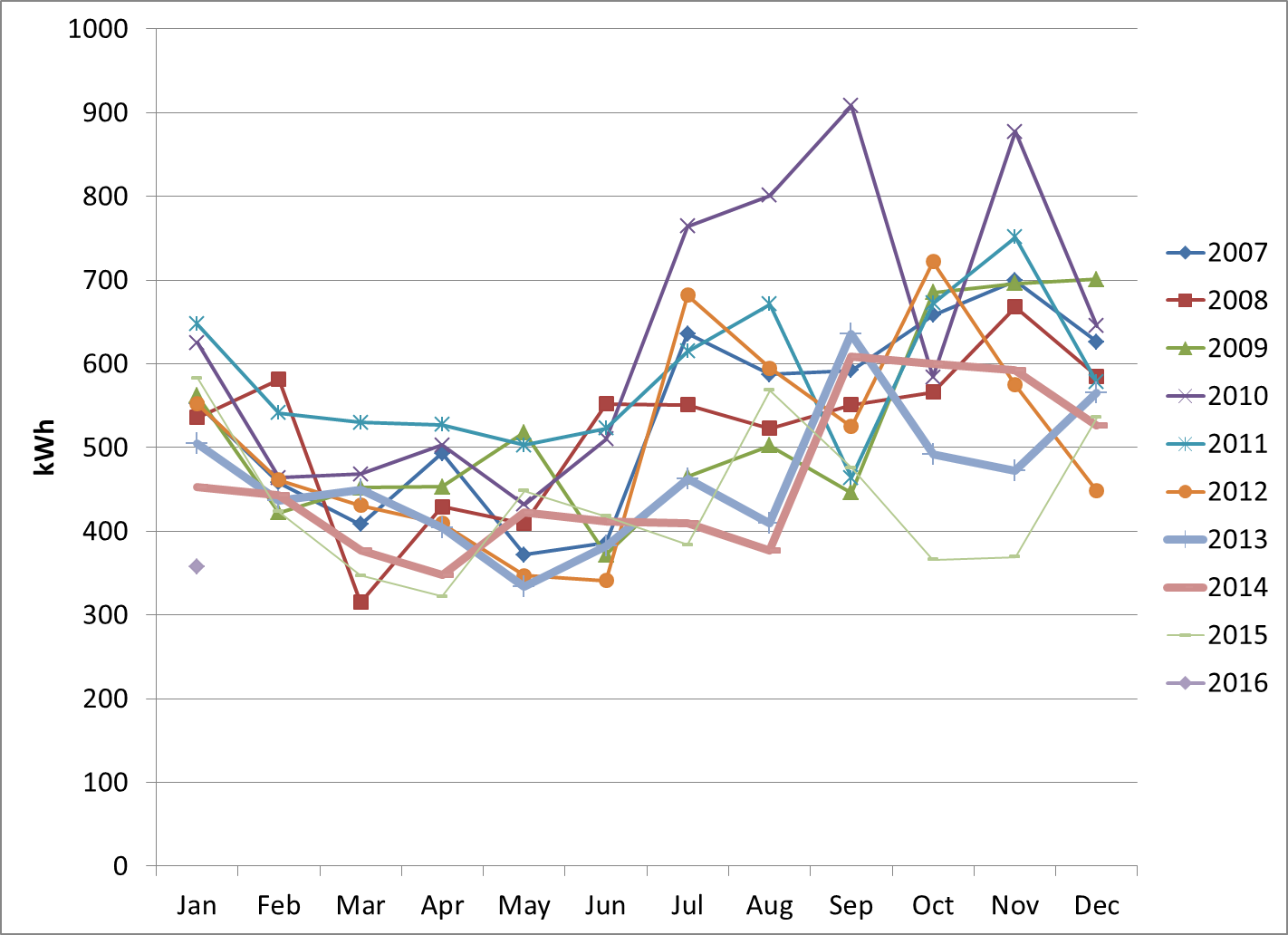
The source of this post is a report by Northeast Energy Efficiency Partnerships (NEEP), Next Generation Energy Efficiency. The direction of things going forward, as described in the report, is boiled down to a few key themes noted in the introduction:
- Deep comprehensive cost-effective savings for all fuels
- Controls and other intelligent efficiency technologies
- Advanced building designs with superb installation, operation, maintenance and control
- Integration of energy efficiency, demand response, and distributed energy
- Engagement of the private sector to deliver high efficiency products and solutions
No widgets.
A Bulbous Barrier
First, I want to discuss a substantial, bordering on major, barrier for these next generation programs and commercial facilities.
From the mid-1990s through recent times, getting major impacts was easy. Go door to door followed by a trailer of fluorescent light bulbs and electronic ballasts and a crew of commercial lighting retrofit technicians – retrofit mania. As profoundly boring as lighting retrofits are, unless the building closes or burns down, there is a high likelihood that savings will be achieved – both energy and demand. For purposes of capturing savings from this measure, it didn’t matter how wasteful the building was operated. In fact, The More You Spend, The More You Save, one of my first posts back in 2009 talked about this at length.
Drive-by savings are gone and therefore, efficiency is no longer as cheap and easy[1]. We must find these facilities that are hemorrhaging energy. We know how to do it. It can be easier, more cost effective, and better for everyone involved, or worse, less cost effective, and a pain for everyone involved.

Here is the barrier.
It seems energy consumption data is about as sensitive as personal healthcare records. I do not know why.
To cost effectively find and deploy deep energy savings and controls, monitoring and intelligent efficiency solutions, we need no-touch screening for this large group of commercial customers. For this, the essentials include annual energy consumption, peak demand, and maybe SIC codes or NAICS codes. This is proving more difficult to get as the cartoon to the left attempts to demonstrate.
Touchless screening can be done in two ways depending on what data are available, and that depends primarily on metering technology the utility has in place. If interval data are available, a prettier more advanced solution like Retroficiency or First Fuel may be used. If only monthly energy and demand data are available, a manual approach can be used to achieve 80% of the same value[2]. The differences in access to, or availability of, customer data are summarized to the right.

Smart Grid
Some, if not the primary purposes of smart grid and advanced metering infrastructure include provider/expert access to customer data to assist customers in using energy wisely and minimizing their energy costs. The problem is, after spending hundreds of millions of dollars, the return on investment has been lousy because of privacy concerns. Personally, people can view my salacious energy consumption all they want. I exposed myself, er my energy consumption last November. Eat your heart out.
I am compelled to show my usage data again because last year I had four monthly lows, and I already have one monthly low this year, January.

Smart meters and smart grid must have seemed like a great idea at one point – install it now, and we will figure out the benefits (and brick walls) later. If energy consumption is such a private matter, we should demand private garages to fill our gasoline tanks. Egad, the next guy can see exactly how much gasoline I put in my tank!
Meek Suggestions
I talk about the following all the time internally – it doesn’t matter what we think; it’s what the client/customer thinks that matters. I think a concerted campaign by utilities, regulators, and other stakeholders (I volunteer) could help ease fears of the boogeyman and even make it cool to engage with the utility and its products and services.
As I noted just a month or so ago, successful retailers and service providers mine data from their customers to help make life easier and more enjoyable for their customers. Ross Shafer gave examples of this at the opening plenary of AESP National 2016, and I noted another case of Kroger food stores.
It’s pretty simple and universal – to enhance customer experience, vendors monitor their customers’ behavior and offer opportunities for successful, valuable, and convenient use of the product. Let’s figure this out. I have ideas.
To Be Continued
Time and space doesn’t permit for discussing the next greatest things discussed in the NEEP study. I promise to get to those soon.
[1] Thank God!
[2] Requires a skilled and experienced analyst, however.





